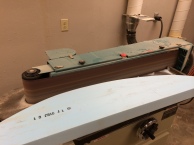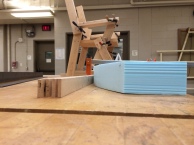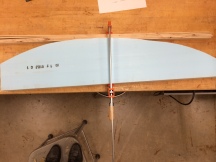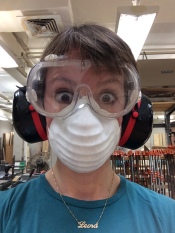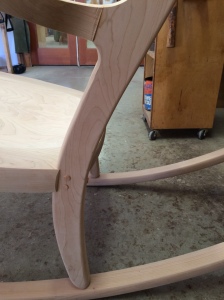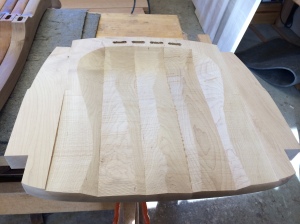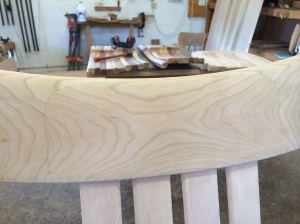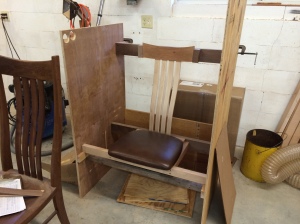Wise words from Guns N’ Roses indeed. Somehow the time just felt right?
Here are some images of the beginning of rocker mock-ups. I’m following the Weeks’ method of laminating quarter-inch strips from the same board over a form by clamping them down starting in the center and then working outward. I cut this dense foam on the band saw and then sanded it by hand and on the belt sander. Don’t worry, I protected myself from the foam particles.
In other news. I think I decided on a wood to use (mahogany) and I still need to do more drawing. I need to move the bend in the back frame to coincide with the armrest and adjust the backrest accordingly, try a version where the taper on the front elevation happens at the top as opposed to the bottom like it does now, and, at Mark’s request, I am going to refine the “alpha” design a little bit more, even though I’m not wild about it. Images soon…
While I’m anxious to get moving on the actual chair, as one of my biggest fears in life is poor time management, Mark is right to draw out the design process a little longer and make sure I’m not missing something and that all my decisions have been thoroughly thought out.
Again, this is a good reason to draw by hand. It means I am taking more time to consider each iteration. Part of why I do this work and want to continue to do this work is to be more patient and to give reverence to each step. If my theory is that this connects me more to the world and gives me a sense of place within it, I should certainly practice what I preach. Fittingly, I was lucky enough to hear Tod Williams and Billie Tsien lecture at UT a couple days ago (you may remember them from my “Knowing Jack?” entry). I couldn’t help but feel like their visit was the universe throwing me a bone. I kept a list of words they repeated over and over again as they presented their projects and came up with honor, nobility, and modesty. They emphasized repeatedly how important it is to them to recognize and honor all the hands, people, and steps that go into a process. They opened their presentation of one of their buildings with a photo of a note scribbled in their phone message book saying that the then-potential client had called, recognizing this post-it-like communication as the actual inception of the project and a step worthy of documentation. They also showed beautiful, imperfect hand-drawings that made the time spent making them evident in an indescribable way. Remembering these aspects of their work is helping to keep me from jumping ahead of myself, as much as I want to, and to place the importance that is due onto all of the steps, not just on the object itself.

